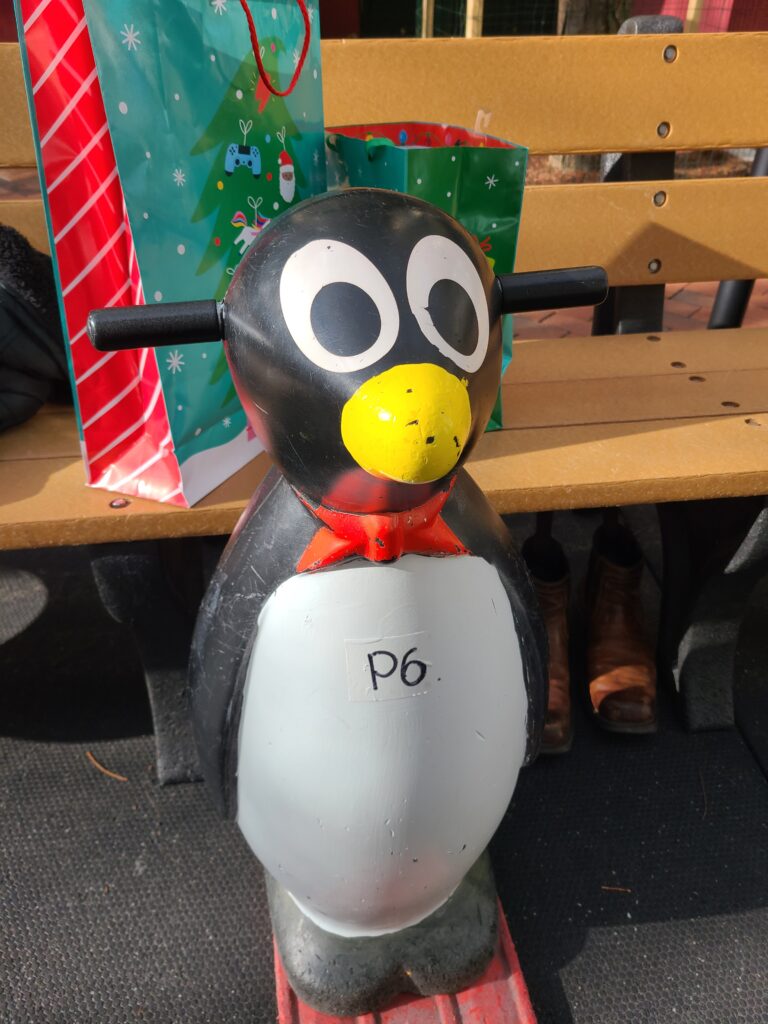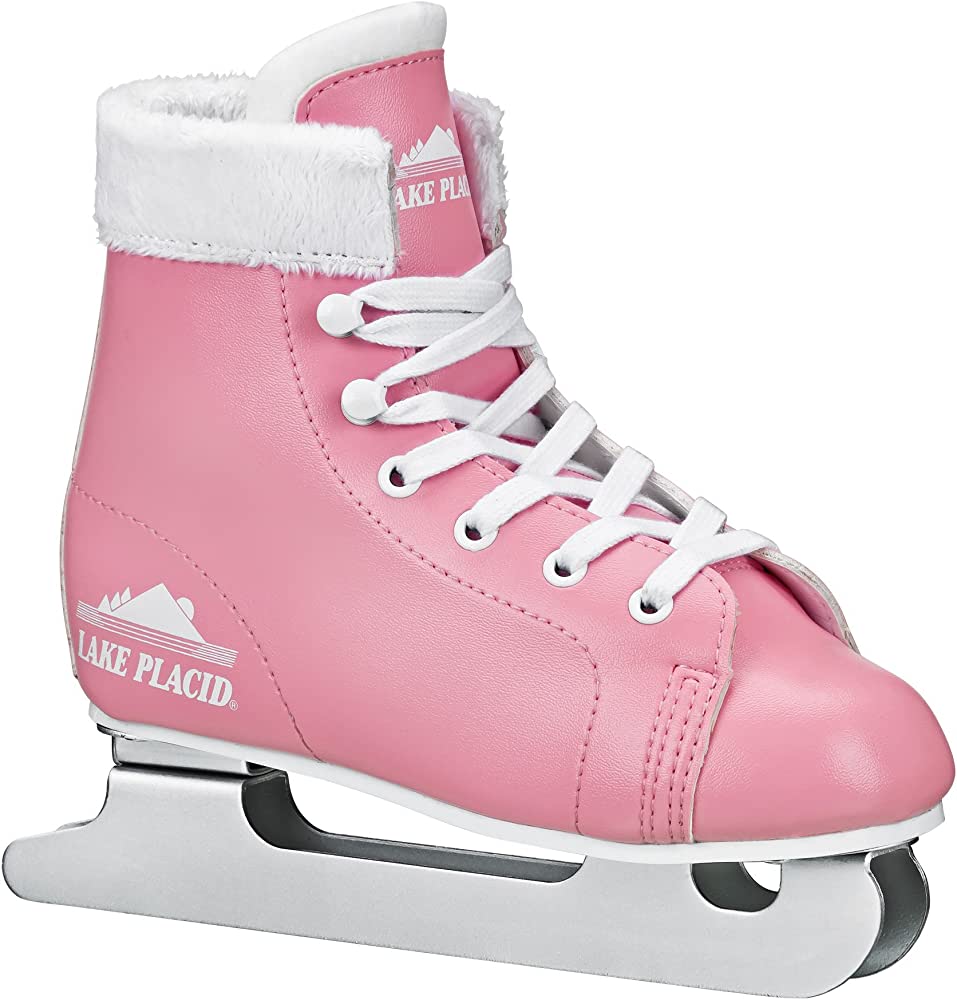Even though I generally advise against the use of skating aids, I’m a big fan of Balanced Blades. In this article I’ll try to explain why.
But first, let me explain the reason I don’t like skating aids:
The world of ice skating is constantly churning out products that claim they make ice skating easier to learn for children. The most common are contraptions that help children stay upright by providing additional support points. They come in many forms, I’m sure you’ve seen them, the ones I see most often are the penguins, shown in the image below:

I don’t like them because they teach bad habits. To skate successfully you need to learn to keep a low center of gravity and to open your hips. Aids teach you the exact opposite of these concepts: they keep you hunched over, leaning all your weight forward. And not only that, they are also a known safety hazard (children slip and hit their teeth on the skating aid), which is why many rinks don’t allow them. If you only plan on taking your kid skating once per year, sure, use them, they’ll have more fun (just be careful they don’t hit their face), but if you are training a future hockey player, don’t waste ice time with them.
And of course, you can also find these abominations in some rinks:

When you are learning how to skate, you must learn how to use your edges. Edges are what make ice skating different from roller blading, skiing, walking or running. Everything you do on the ice, besides just standing upright and marching, requires using your edges (stopping, swizzles, crossovers, etc. Literally everything). And you can’t learn that with double bladed skates as they lack edges. But if all you want to do is teach your child to stand upright and march on the ice, I guess these will do.
Ok, sure, but what about Balanced Blades?
Balanced Blades, according to their own website (and no, I don’t work for them and I’m not sponsored by them, I simply like their product and have used it to teach both my sons to skate on ice), are “beginner skates [that] are designed to prevent rear falls and help a child learn to skate.”
Unlike the other skating aids discussed above, they don’t promote bad habits. They don’t provide unnatural support and they have edges like any regular hockey skate (one inside edge and one outside edge per skate). The critical thing these skates do, is they make it harder for kids to fall on their back. And this is exactly the type of fall you’re trying to prevent with a new skater, and the type of fall that usually scares the heck out of new, young skaters if the parent fails to break it for them. Plus they can hit the back of their head (which is why new skaters should always wear a helmet and be taught to tuck their chin if they fall backwards).
Keep in mind Balances Blades don’t make falling impossible, a kid skating for the first time will fall, they just make rear falls less likely.
The way Balance Blades reduce the risk of rear falls is actually very clever, the blade has an indentation on the back, which makes it easier for your child to avoid slipping backwards:

Notice the difference with hockey skates? Hockey skates have short blades with no indentations, so a kid is more likely to slip backwards with hockey skates than with any other type of skate (including figure skates):

That alone makes these skates worth it as a beginner tool, in my opinion. They are infinitely better than poorly-sharpened rental skates.
One other thing to note is that their size is adjustable, so you don’t need to replace them as often as you do other skates. But I’ll admit that with both my kids my goal was for them to grow out of the Balanced Blades as quickly as possible, so I view them as a learn-to-skate tool, not something I want to keep long-term. The reason for that is I taught my kids how to skate on ice with the goal of getting them into hockey. And these are not hockey skates.
What is the difference between hockey skates and Balanced Blades?
We already talked about the different shape of the blade. The blade of Balances Blades is meant to reduce (again, not eliminate) the risk of a child falling dangerously, the blade of hockey skates is built for speed and quickness. Hockey skates allow faster skating and sharper turning. But there is another critical difference: Balanced Blades don’t have the toe or ankle protection that hockey skates have. And you never want to be on the ice with hard, vulcanized rubber pucks flying around without the protection hockey skates offer.
Is the transition from Balanced Blades to hockey skates seamless?
Not quite seamless, but also not too challenging, assuming your child can already skate forward confidently. With both my sons, it took a few laps around the rink to get them comfortable with hockey skates. With my first son, I transitioned him to hockey skates after he had finished Basic 1, and he could already do forward swizzles very confidently. And I remember him telling me “I can’t do swizzles anymore”. I told him to keep trying a bit longer and he’d figure it out. And within a few minutes he did.
I transitioned my youngest son a bit earlier, after he had finished Snowplow Sam 1 and he still couldn’t do forward swizzles but could skate around the rink unassisted. His first time wearing hockey skates on the ice he got nervous quickly, as he didn’t feel as stable as before (which is actually proof Balanced Blades make falling harder) and didn’t like the hockey skates, but as with my first son, after a couple laps around the rink he was back to skating with the same confidence as before.
So plan at least one public session to work on the transition. They just need to skate a few laps around the rink.
Conclusion
I think Balanced Blades are a great resource for new, young skaters. They help make those first few sessions of the ice a bit safer. Do plan at least one public session to transition them to hockey skates, but don’t get stressed, the transition is easy. I recommend waiting until they can skate around the ice confidently and without assistance before making the change to hockey skates.

Thank you for your review of Balance Blades in your Beltway Hockey blog – introducing Washington area kids to hockey. We are happy to hear our skates helped your two sons ‘learn to skate’. We now have Balance Blades hockey skates, that help kids ‘learn to skate’ while they ‘learn to play’ hockey. We are excited to play a small part in growing the game. ❤️